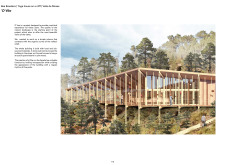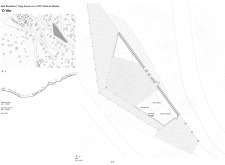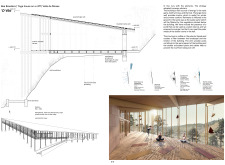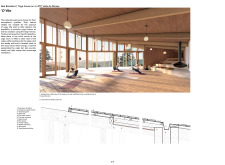5 key facts about this project
The architectural project under analysis showcases a thoughtful integration of modern design principles with functionality and context. This project is characterized by a distinct architectural language that combines aesthetics with purpose, creating a structure that serves both its occupants and the surrounding environment. Key elements include the careful selection of materials, innovative spatial organization, and a strong emphasis on sustainable practices.
In terms of function, this project may serve as a mixed-use development, providing a seamless blend of residential, commercial, and communal spaces. This multi-faceted approach enhances the usability of the site, promoting interaction among diverse user groups. The layout is thoughtfully designed to encourage movement and flow, guiding occupants through spaces that are both dynamic and functional.
Materiality plays a pivotal role in the overall design, where the choice of materials not only supports the architectural intent but also responds to environmental considerations. Common materials utilized in this project may include reinforced concrete, glass, steel, and certified timber. Each of these materials contributes to the building's performance, energy efficiency, and aesthetic appeal. For instance, large expanses of glass facilitate natural light penetration and promote visual connections between indoor and outdoor environments, while the use of timber adds warmth and texture to the building’s façade.
The design approach incorporated into this project is unique in its emphasis on biophilic principles, which aim to enhance occupant well-being through a connection to nature. This may be reflected in the strategic placement of green roofs, living walls, and landscaped terraces, which not only improve air quality but also provide recreational spaces for the inhabitants. The design encourages biodiversity, with carefully selected plant species that thrive in the local climate.
Another notable aspect is the adaptive reuse of existing structures within the site. This approach not only preserves historical elements but also reduces waste and resource consumption, reflecting a commitment to sustainability. By integrating new architectural designs with existing contexts, the project fosters a sense of continuity and heritage, enhancing the architectural narrative.
The architectural sections and plans are meticulously crafted to illustrate the relationship between the various functional areas, emphasizing accessibility and user comfort. Detail-oriented design allows for flexibility in space utilization, accommodating evolving needs over time. The incorporation of areas for social engagement, such as communal gathering spaces and multi-purpose rooms, enriches community life, supporting the involvement of residents in neighborhood activities.
In summary, this architectural project exemplifies a contemporary understanding of design that prioritizes user experience, sustainability, and contextual relevance. To gain deeper insights into the complexities of this project, including architectural plans, sections, and innovative ideas, readers are encouraged to explore the presentation further.






















































